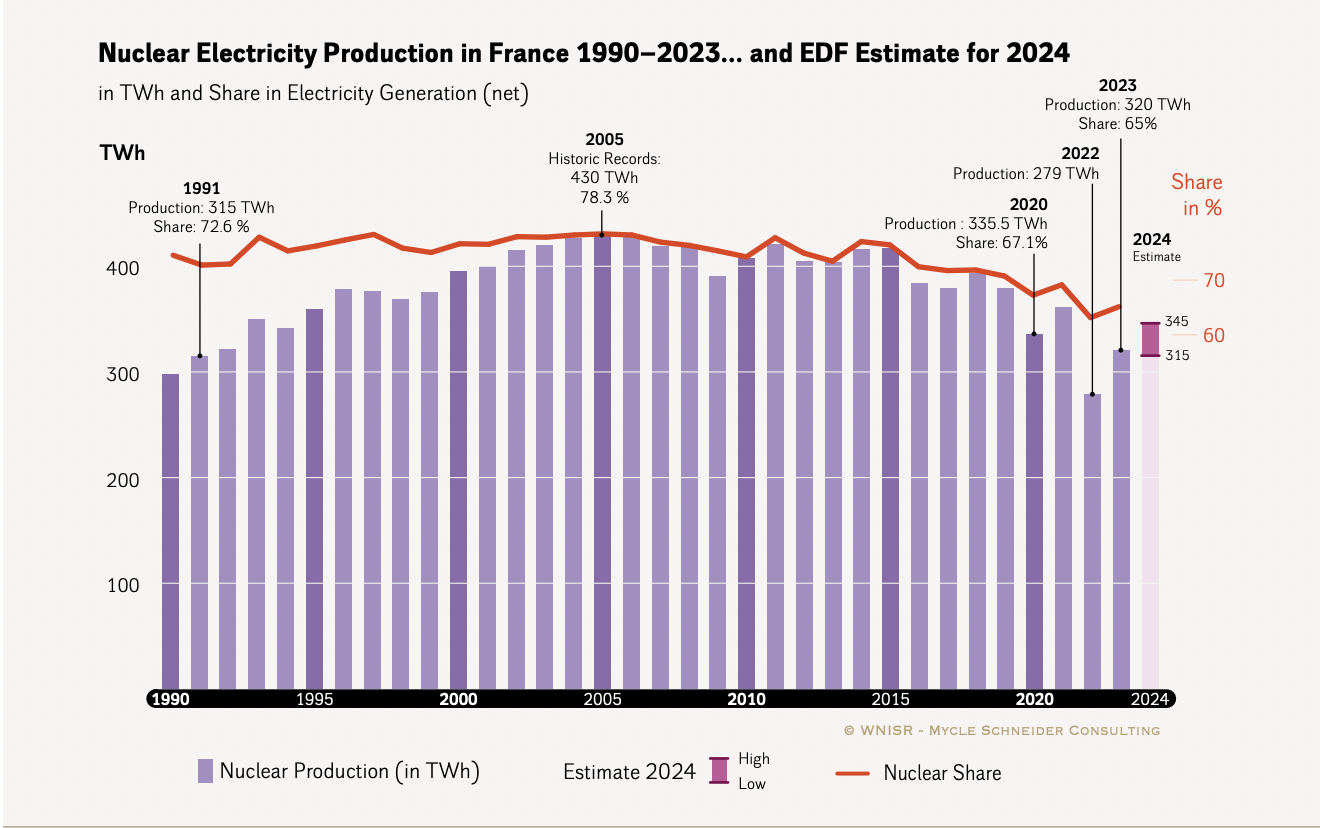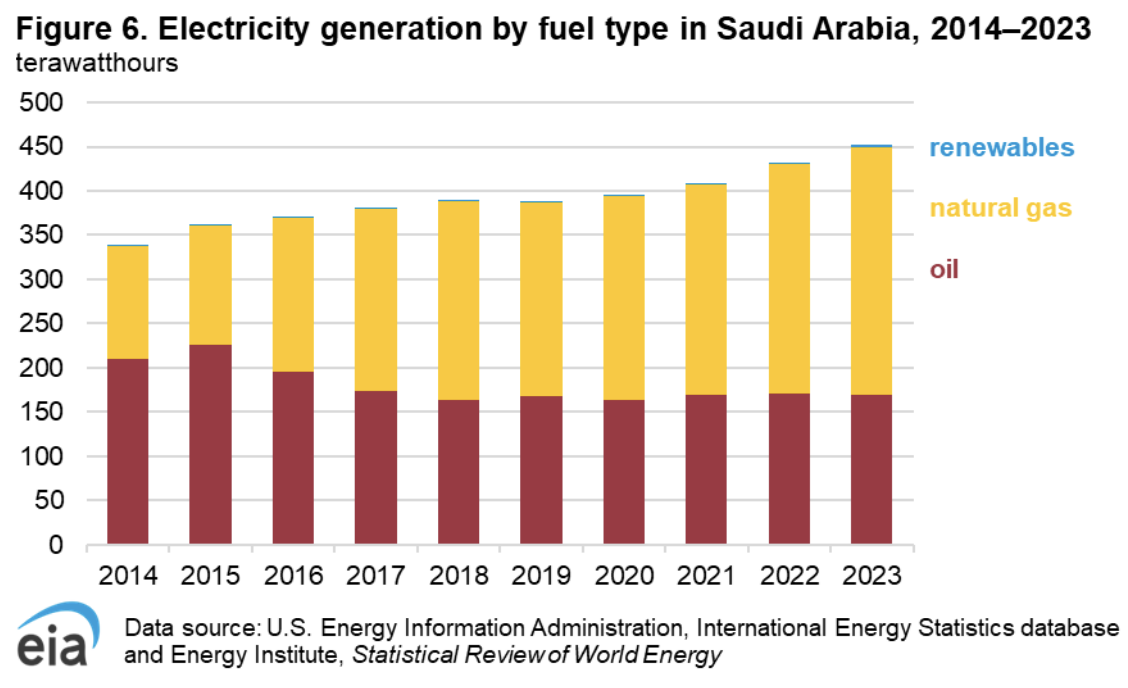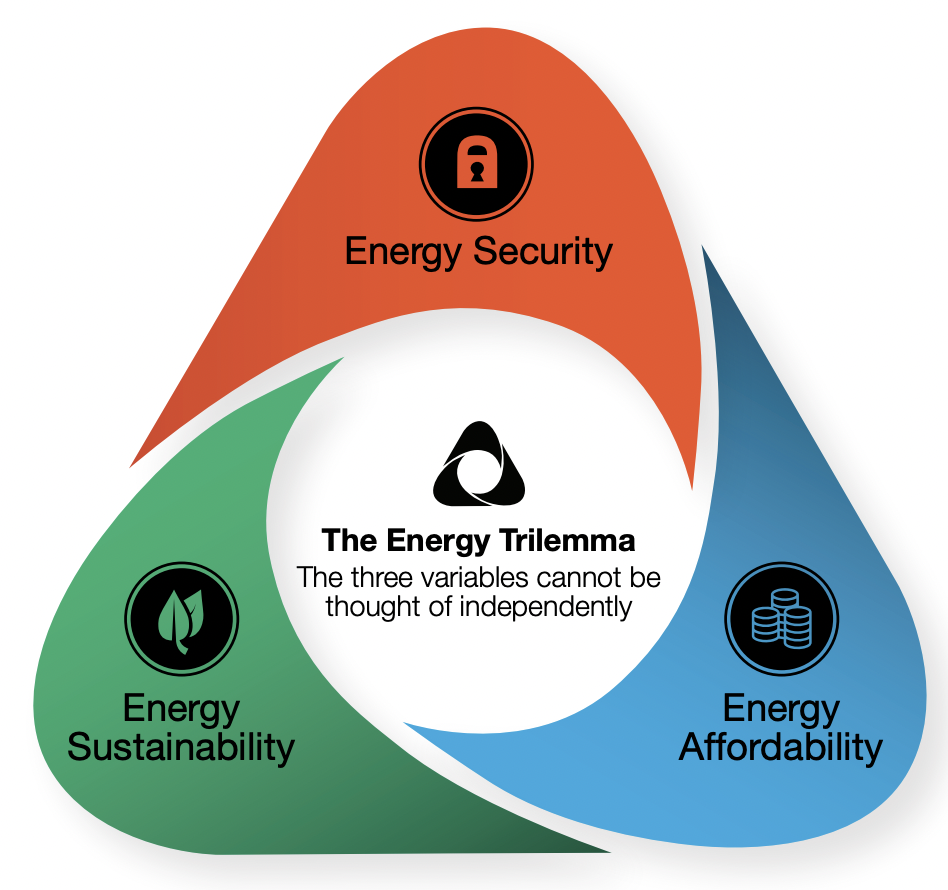IB Syllabus focus:
‘Countries weigh sustainability, cost, pollution, efficiency, availability and security differently; compare two contrasting national mixes and rationales.’
National energy choices reflect complex trade-offs between economic development, environmental protection, and social needs. Countries balance sustainability, affordability, efficiency, and security to meet diverse energy demands.
Factors Influencing National Energy Choices
Sustainability
Sustainability refers to the long-term capacity of an energy system to meet demand without depleting resources or causing irreversible harm. Countries increasingly prioritise renewable options such as solar, wind, and hydroelectric power to reduce dependence on finite fossil fuels. Sustainable energy systems also aim to minimise carbon emissions and mitigate climate change impacts.
Cost
Economic considerations often drive energy decisions. Fossil fuels, particularly coal and natural gas, can be cheap and accessible in regions with large reserves. However, renewables are experiencing rapid cost reductions due to technological advances and economies of scale. Countries may therefore pursue a mixed portfolio that balances short-term affordability with long-term savings from renewables.
Pollution
Energy choices significantly influence air quality, water contamination, and greenhouse gas emissions. Coal combustion, for example, produces carbon dioxide, sulphur dioxide, nitrogen oxides, and particulate matter, contributing to climate change and health problems. By contrast, renewable energy sources generate minimal emissions once operational. Nations with high pollution burdens often face strong internal and international pressure to transition away from fossil fuels.
Efficiency
Efficiency measures how effectively energy resources are converted into useful work. Countries with advanced technology may adopt high-efficiency natural gas plants, combined heat and power systems, or smart grids to optimise usage. Greater efficiency reduces overall consumption, enhancing both economic and environmental outcomes.
Availability
Geography strongly shapes national choices. Nations with abundant hydropower potential, geothermal resources, or fossil fuel reserves often exploit these assets. Conversely, energy-poor states may rely on imports, leaving them vulnerable to price fluctuations and geopolitical instability. Availability therefore intertwines with energy security and strategic planning.
Security
Energy security is the long-term availability of sufficient, affordable, and reliable energy to sustain societies. Countries dependent on imports, such as Japan, face heightened risks from international supply chain disruptions. To mitigate this, they diversify energy mixes, invest in domestic renewables, and build strategic reserves.
Contrasting National Energy Choices
Case Study 1: France
France prioritises energy security and low-carbon electricity through a strong reliance on nuclear power.
Roughly 70% of electricity is generated from nuclear reactors.

Time-series chart showing France’s nuclear electricity production (TWh) and its share of national generation since 1990, illustrating sustained reliance on nuclear to meet security and low-carbon objectives. The visual clarifies the policy choice underpinning France’s energy mix. Source.
Nuclear reduces dependence on imported fossil fuels, ensuring stable supply.
It produces low greenhouse gas emissions, supporting climate goals.
However, drawbacks include radioactive waste management, high construction costs, and accident risks.
France supplements nuclear with renewables, particularly hydroelectric and wind, aiming for greater balance.
France’s rationale lies in reducing vulnerability to energy imports while maintaining sustainability through nuclear low-carbon output.
Case Study 2: Saudi Arabia
Saudi Arabia’s energy mix reflects its abundant oil and gas reserves and economic reliance on fossil fuels.
Oil dominates both domestic consumption and export revenue.

Bar chart of Saudi Arabia’s electricity generation by fuel (2014–2023), showing heavy reliance on natural gas and oil with minimal renewables. This visual supports the case-study discussion of cost, availability, and security shaping the national mix. Source.
Low extraction costs and infrastructure investment make oil the most economical choice.
Reliance on oil leads to high per-capita carbon emissions and vulnerability to global price fluctuations.
Recently, Saudi Arabia has invested in solar energy projects, aiming to diversify energy sources and free up oil for export.
Saudi Arabia’s rationale is rooted in maximising economic benefit from natural resources, while beginning a gradual transition toward renewables to improve long-term sustainability.
Comparing Rationales
France values security and low emissions, choosing nuclear despite long-term waste challenges.
Saudi Arabia prioritises cost and economic returns from oil, though it faces sustainability and pollution concerns.
Both countries illustrate how geography, resources, and political economy determine contrasting approaches.
Balancing National Priorities
Countries ultimately weigh the following in unique ways:
Economic priorities: affordable energy for growth.
Environmental concerns: reducing emissions and pollution.
Technological capacity: efficiency and innovation.
Geopolitical realities: import dependency versus self-sufficiency.

Triangle diagram illustrating the Energy Trilemma: balancing energy security, affordability, and environmental sustainability. Use it to interpret how different countries prioritise factors when designing their energy mixes. This introduces no extra syllabus content beyond a concise visual framework for the listed criteria. Source.
These trade-offs ensure that no universal model exists. Instead, national energy choices reflect evolving values, resources, and political decisions in the pursuit of a secure and sustainable future.
FAQ
Historical events such as oil crises, wars, and industrial revolutions have long-term impacts on national policies. For example, the 1973 oil crisis pushed many European nations towards nuclear power to reduce dependence on Middle Eastern oil.
In contrast, resource-rich countries often built infrastructure around abundant domestic fuels, locking them into specific energy pathways for decades.
Public acceptance or resistance can make or break energy projects.
In countries like Germany, public concern over nuclear safety after incidents such as Fukushima led to rapid phase-out policies.
Conversely, strong public support for renewables can accelerate government subsidies and investment in green technologies.
Fossil fuels remain attractive due to their energy density, existing infrastructure, and export value.
For resource-rich nations, oil, gas, or coal revenue often underpins government budgets, making a rapid transition economically risky. Political and financial stability can outweigh sustainability concerns in the short term.
Agreements like the Paris Climate Accord commit countries to emission reductions, indirectly shaping energy policy.
Nations often set renewable targets or efficiency goals to meet pledges.
Failure to comply may result in international pressure, reduced trade opportunities, or reputational damage.
Countries may pursue several strategies to strengthen energy independence:
Diversifying their mix with renewables such as solar and wind.
Investing in domestic unconventional sources like shale gas.
Developing energy storage systems to stabilise intermittent supply.
Expanding regional interconnections for electricity trade.
Practice Questions
Question 1 (2 marks):
Identify two factors that influence national energy choices.
Mark scheme:
1 mark for each valid factor identified. Examples:
Sustainability
Cost
Pollution
Efficiency
Availability
Security
(Max 2 marks)
Question 2 (5 marks):
Compare how France and Saudi Arabia justify their national energy choices, with reference to both sustainability and availability.
Mark scheme:
1 mark for identifying France’s reliance on nuclear power.
1 mark for explaining France’s rationale of sustainability (low carbon emissions) and energy security (reducing imports).
1 mark for identifying Saudi Arabia’s reliance on oil and gas.
1 mark for explaining Saudi Arabia’s rationale of availability (abundant reserves) and cost-effectiveness.
1 mark for linking Saudi Arabia’s approach to sustainability concerns (high emissions, beginning renewable investment).
(Max 5 marks)

